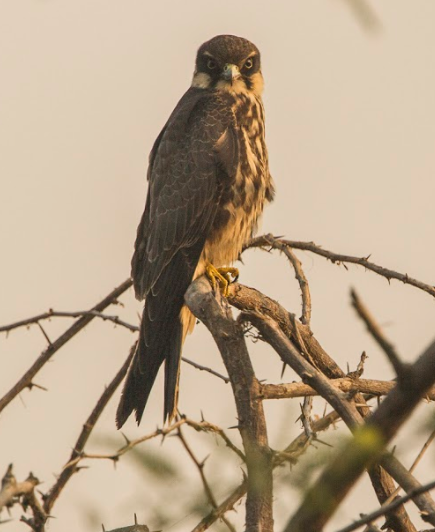A few months ago when the Covid-19 pandemic first hit and the lockdowns were enforced, social media was awash with stories of wildlife walking the empty streets vacated by man. The nilgais, the peacocks, and even the occasional leopard were seen within city precincts, to the wonderment of many. What is probably not obvious to many, therefore, is that even in a city like Delhi, wildlife in various forms, including some exotic visitors, does co-exist with its human population, though not always harmoniously.
At the heart of Lutyens’ Delhi lies the Delhi Ridge, a protected reserve forest, arguably the lungs of the city. While the dominant image of the roads snaking past the ridge is its profusion of monkeys, sightings of the Indian grey hornbill and kites are also commonplace. They are more likely to be seen early morning before the traffic starts plying. Some stretches, like the road behind the New Delhi Kali Bari which is relatively less disturbed, are clearly better. The proximity of the Ridge has one big advantage for the surrounding human habitat. Bird species like barn owls and barbets sometimes find their way to the nearby colonies, to the consternation of local bird populations. The barn owl in the picture, for example, being a bird of prey, was attacked mercilessly by local crows for intruding into their territory, as is the law of nature. The other remarkable occurrence is centred in the Delhi Zoo, when come winters, it notably plays host to painted storks in large numbers, a bird classified as “near threatened” worldwide, and an immensely important part of Delhi’s wildlife heritage.
Painted storks are just one of the many species of birds which flock to Delhi and its surrounding areas in winter. Some of the important birding areas in and around Delhi are the Okhla Barrage near Noida, Sultanpur, the Basai Wetlands and Jhajjar district near Gurgaon. A few winters ago, the marbled duck and the Baikal teal made their way across to the places around Sultanpur and Jhajjar, travelling hundreds of kilometres from their breeding sites. The Baikal teal breeds in Siberia and winters in the less harsh climes of eastern Asia. A few of them make their way into India as well and are seen in these parts for a few weeks. The marbled duck, classified as “vulnerable” and globally threatened, similarly breeds mostly in Europe and Asia, and is known to visit India in very small numbers. It may be worthwhile to follow bird sightings reported in the media or connect with expert birders to get to know when these species come during a year and have them arrange the sightings.

The National Capital Region is not just about the headline-grabbing painted stork and the marbled duck, but about species, numerically larger in numbers, but seen seldom. One wonders how many people know about the Spanish and the Sind sparrows, worthy members of the sparrow family but different from the house sparrows one would see so often in Delhi. People across the country often see red-wattled lapwing within the city limits, but the less common yellow-wattled one also exists in this area. The pratincoles also lie unseen among ploughed fields, flying off when one comes too close. Come the month of September, the Eurasian hobby, a bird of prey from the falcon family, will also inhabit the trees around Sultanpur for a few weeks. Meanwhile, the cattle egret will imbibe spectacular hues during breeding time. All these and more will unfold over the next few months as migrating birds start coming in.



Given their distances from Delhi, all the birding sites are a drive away and can be covered as day trips. While one can find the birds within the confines of the sanctuaries, oftentimes the birds are located outside the parks, and here a bird guide is required. Most sanctuaries have guides associated with them and they can be found at the entry gates. The commitment, knowledge and spotting ability of a lot of them is unfortunately suspect, but the better ones are worth the fees paid to them. A crucial part of the expert guide’s role is the area survey that the guide does beforehand, identifying species over a geographical area and its adjacencies, the preferred habitat, behaviours, and identification parameters, all of which elevates the bird watching qualitatively. A bird-watching guide popular in the NCR and its surrounding areas is Sanjay Sharma, who can be contacted beforehand for visits. (His number is 09812470521.) Be prepared for riding over a lot of unpaved and broken roads, and also hiking to specific spots when necessary.















